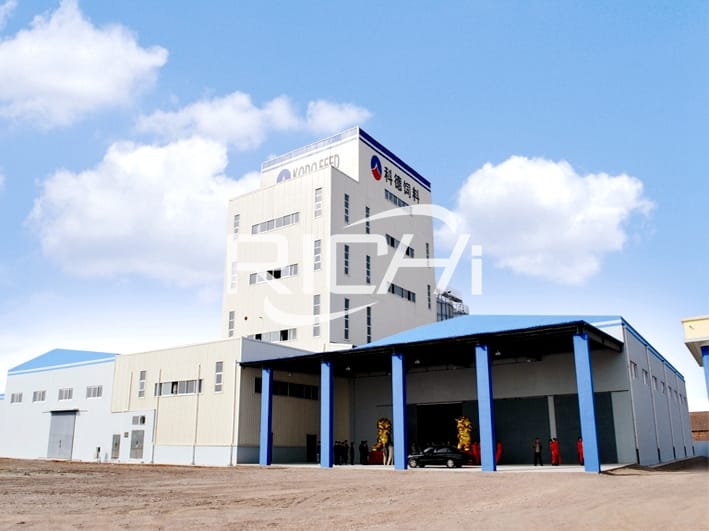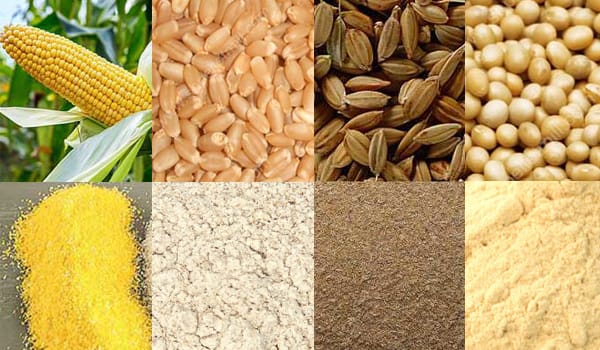Recently, the basic situation of the environmental impact assessment document for a 100,000 tons per year high-calcium stone powder feed processing project of RICHI has begun to be publicized. According to the relevant provisions of the environmental impact assessment approval procedures for construction projects, after review, the local government has made an approval opinion on the environmental impact assessment documents of the construction project of processing and selling high calcium stone powder feed. In order to ensure the seriousness and fairness of the examination and approval work, the basic information of the environmental impact assessment documents to be approved will be publicized.

1. Project name: High calcium stone powder feed processing and sales construction project with annual output of 100000 tons
2. Construction site: Tonying Town, Yuanzhou District, Guyuan City
3. Overview of the construction project: A new limestone powder production line will be built. After completion, it will produce 100,000 tons of high calcium stone powder and 325 mesh superfine limestone powder, which will be sold as feed additives.
4. Project investment: The total investment of feed plant project is 13.6 million yuan, of which environmental protection investment is 171,000 yuan, accounting for 1.26% of the total investment.
5. Main environmental impacts and countermeasures and measures to prevent or reduce adverse environmental impacts:
★Environmental impact analysis during construction period:
(1) Exhaust gas
①Dust from construction
The construction unit shall set up enclosures around the construction site in accordance with regulations, and shall adopt effective dust prevention measures such as sealing and covering for materials such as sand, gravel, lime and soil and construction waste that cannot be removed in time. When loading and unloading dust-producing materials and leveling the site, effective dust prevention measures such as wet work must be taken. Transport vehicles on the construction site must be desilted and dust-removed before leaving the site. Vehicles with mud on wheels are strictly prohibited from driving on the road, and construction vehicles are required to be transported in a sealed manner, and spills are strictly prohibited.
②Vehicle exhaust
The main components of exhaust gas are nitrogen oxides and hydrocarbons, and a small amount of carbon monoxide is also generated. Construction vehicles should be regularly inspected and maintained to ensure that the exhaust gas meets the emission standards.
(2) Noise
The noise source during the construction period is mainly the noise generated by construction machinery and transportation vehicles. The construction unit must do the following: select construction machinery that meets environmental protection standards, and under normal use, it is easy to produce processing machinery that exceeds noise limits. , Such as mixers, electric saws, electric planers, etc., adopt a closed principle to control the spread of noise, and control vehicle noise by keeping the technical condition intact and appropriately reducing the speed. The noise value should meet the "Environmental Noise Emission Standard for Construction Plants" "(GB12523-2011) in the standard requirements.
(3) Wastewater
The domestic sewage generated by the constructors during the construction period relies on the existing drainage system of Yi Village.
(4) Solid waste
A small amount of construction waste and domestic waste will be generated during site leveling and construction. Construction waste must be separated and stacked in a special site. It must not be mixed with domestic waste and removed in time; covered with tarpaulin to prevent dust , Strengthen construction site management, prohibit waste recyclers from entering the site, after the completion of the construction, it is necessary to completely remove the remaining garbage on the construction site; after a small amount of domestic garbage is collected, it will be disposed of by the local environmental sanitation department.
★Conclusion on environmental impact during operation period:
(1) Exhaust gas
The waste gas during the operation period of this project includes feed dust, grinding and screening dust, and raw material stacking and unloading dust.
Feeding dust: The raw material storage yard of the project is located in the production workshop, and the loader is used to load the materials into the silo. The raw materials of the project are selected and are limestone particles with a particle size of ≤0.3mm. Water is used during the feeding process. Spray measures;
Grinding and screening dust: 1 set of pulse bag filter with a treatment efficiency of 99%. After treatment, it will be discharged through a 15m high exhaust cylinder;
Raw material stacking, loading and unloading dust: This project will set up a fully enclosed raw material warehouse, covering an area of 2000m2, for storing raw material limestone.
(2) Wastewater
The production process of the 100000 tons large capacity animal feed factory project does not produce wastewater, and the wastewater is mainly domestic sewage. After the domestic sewage is treated in the septic tank, it is discharged into the domestic sewage pipe network, and finally discharged into the Sanying sewage treatment plant for treatment.
(3) Noise
After the operation of the project, the noise value at the boundary of the plant meets the Class 2 standard in the "Environmental Noise Emission Standard at the Boundary of Industrial Enterprises" (GB12348-2008)<./p>
(4) Solid waste
The solid waste generated during the operation period of this project is mainly scrap iron filings, dust collected by dust collectors, and domestic garbage generated by employees in their daily lives. Scrap iron scraps are recovered by the waste recycling station; the main component of the dust collected by the pulse bag filter is limestone powder, which is sold as an animal feed additive (calcium powder); the domestic garbage is collected and transported by the local sanitation department.
(5) Soil environmental impact analysis
The waste gas during the production process of this feed production project is mainly dust, which can be discharged up to the standard after being treated by the pulse bag filter; the waste water is mainly domestic sewage, after being treated in the septic tank, it is discharged into the domestic sewage pipe network, and finally discharged into the local sewage treatment Factory processing. The septic tank adopts anti-seepage measures, and the anti-seepage coefficient is not more than 1.0×10-7cm/s, which has little impact on the soil environment.

6.Introduction of high calcium stone powder
Stone powder, also known as limestone powder, is white or off-white powder, which is crushed from high-quality natural limestone. It is natural calcium carbonate (CaCO3), generally containing more than 35% pure calcium. It is the cheapest and most convenient mineral material for calcium supplementation. Or calcining limestone at high temperature into calcium oxide (CaO, quicklime), then adjust it into lime milk with water, and then react with carbon dioxide to make precipitated calcium carbonate products. This product is fine and light, and is high-quality calcium carbonate. It contains more than 95% calcium carbonate, and the calcium content is between 34% and 38% due to different mineralization conditions. In terms of dry matter, the composition and content of limestone powder are as follows (%): ash content 96.9%, calcium 35.89%, chlorine 0.03%, iron 0.35%, manganese 0.027%, and magnesium 0.06%. In addition to being used as a calcium source, stone powder is also widely used as a diluent or carrier for trace element premix feed.
In natural limestone, as long as the content of lead, mercury, arsenic, and fluorine does not exceed the safety factor, it can be used as feed. Some limestone contains high other elements, especially those with high toxic elements can not be used as feed grade stone powder. It is generally believed that the content of magnesium in feed-grade stone powder should not exceed 0.5%, and the content of heavy metals such as arsenic is more strictly limited. The dosage of stone powder depends on the species and growth stage of livestock and poultry. Generally, the amount of stone powder used in the compound feed for livestock and poultry is 0.5% to 2%, and it can reach 7% to 7.5% for laying hens and breeders. Excessive feeding of stone powder alone will reduce the digestibility of organic nutrients in the diet. It is also harmful to the kidneys of young chickens. It will cause excessive deposition of urate in the urinary system, causing inflammation and even formation of stones. If the laying hens receive too much stone powder, a thin layer of fine particles will adhere to the eggshell, which will affect the pass rate of the egg. It is best to use it with organic calcium-containing feed such as shell powder in a ratio of 1:1.
As a source of calcium, stone powder has a medium particle size, generally 26 mesh to 36 mesh for pigs and 26 mesh to 28 mesh for poultry. For laying hens, a coarser particle size helps maintain the concentration of calcium in the blood and meets the need for eggshell formation, thereby increasing the strength of the eggshell and reducing the rate of damage to the egg, but the coarser particles affect the uniformity of the feed. Limestone is calcined at high temperature to form calcium oxide, and then water is added to prepare milk of lime, and then calcium carbonate is formed by the action of carbon dioxide, which is called precipitated calcium carbonate. Our national standard is applicable to feed-grade light calcium carbonate prepared by precipitation method. This product is thin and light, contains less impurities, and generally contains more than 95% calcium carbonate (more than 38% calcium). It is a high-quality calcium carbonate product.


